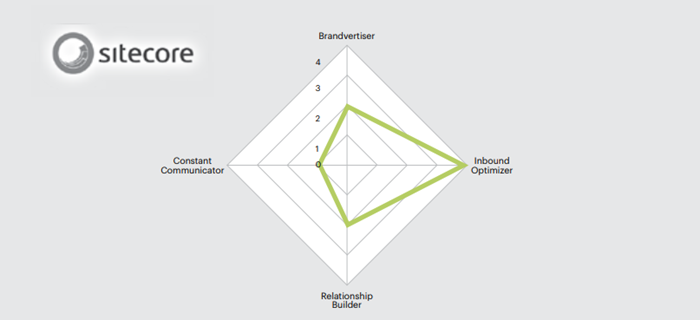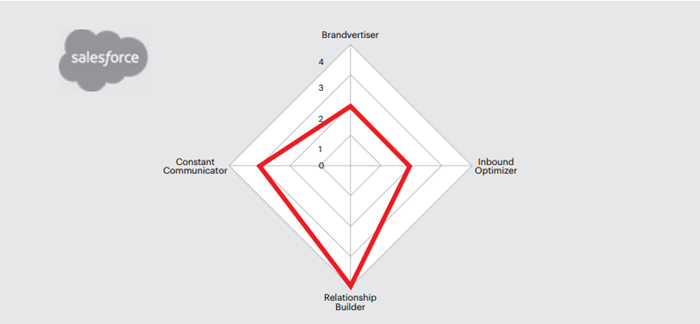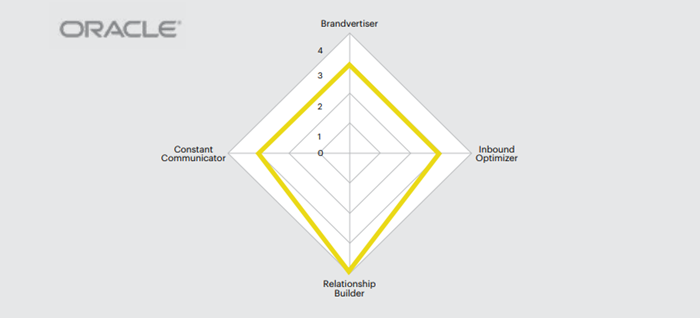How to Select a CX Platform that Best Suits Your Business
As customer experience management platforms keep growing in importance, it has become  common for many vendors to cast themselves in a different light. Today, many solutions bill themselves as a customer experience management platform, however, in reality, they only address one or two aspects of the customer experience. Another misstep from the buyer end is that whichever vendor that offers the most CX solutions in one suite should be the one to consider.
common for many vendors to cast themselves in a different light. Today, many solutions bill themselves as a customer experience management platform, however, in reality, they only address one or two aspects of the customer experience. Another misstep from the buyer end is that whichever vendor that offers the most CX solutions in one suite should be the one to consider.
First, for a software to truly be entitled to be a customer experience management platform, the personalized and omnichannel experiences it creates should meet all the different levels of maturity at every stage in the customer journey. This also means the inclusion of all departments, not only marketing.
Second, for a technology buyer, to choose the right (not the best) platform, they need to take a harder look into specific features that can speak to their unique needs and audience, rather than getting dazzled by the breadth of features that will end up being shelved anyways. After all, it not realistic to expect a single platform to offer all the best-in-class solutions needed.
As it is not an easy task, Omar Akhtar, industry analyst at Altimeter, wrote a very  comprehensive paper where he identifies four customer experience archetypes as well as an analysis of the specific features and strengths the major vendors have. The reason he, first, introduces four archetypes is as Akhtar puts it, the key is to deploy a CEM platform best suited to delivering the archetype a company prioritizes. Since the report is jam-packed with so many great data points, I wanted to share a few big takeaways that stood out for me from Akhtar’s report.
comprehensive paper where he identifies four customer experience archetypes as well as an analysis of the specific features and strengths the major vendors have. The reason he, first, introduces four archetypes is as Akhtar puts it, the key is to deploy a CEM platform best suited to delivering the archetype a company prioritizes. Since the report is jam-packed with so many great data points, I wanted to share a few big takeaways that stood out for me from Akhtar’s report.
The Brandvertisers for Brand-Centric Companies
This approach heavily relies on content marketing and storytelling because the premise of this archetype is cultivating a deep connection between a brand and the target audience through entertaining and compelling content. In other words, creating mass awareness of a brand.
When we think about one of the most-practiced marketing principals, a ladder of engagement, prioritizing this approach can go a long way to building a solid foundation of brand experience. After all, “people are not willing to watch or consume a 30-second ad if they have no connection with the brand,“ as Thales Teixeira, Harvard Business School professor claims. Giant brands like GoPro and Redbull have been taking advantage of sequential storytelling methods to build engagement deliberately. When we look at their content, they do not pitch their products directly, instead, they publish entertaining and captivating content that can resonate with their unique audience.
If an organization is a brand-centric company, then they need to make sure that the CEM platforms they consider include the ability to distribute content on a mass scale, strong advertising capabilities, and creative-asset management features. Since this approach focuses on cultivating brand loyalty and keeping customers coming back, understanding which type of content and topics capture the audience attention, as well as preferred channels in communicating with the brand, is crucial. To that point, the strong analytics capabilities are also essential.
In the report, Akhtar also looks into the major vendors’ offerings that manage experiences across multiple phases of the customer journey. With that in mind, Adobe has been named the winner of the Brandvertertisers category. One of the reasons why Akhtar gives Adobe solid credentials for the Brandvertiser archetype is Adobe Advertising Cloud. He states: “You can create audience segments and target them with paid content across search, display, social media, and television.”

The Inbound Optimizer for E-Commerce or Mobile-App-Centric Businesses
If delivering consistent customer experience across all brand-owned channels is a priority for a brand, then this approach should be a priority as well. In other words, this approach heavily focuses on omnichannel.
Millennials demonstrate the most brand loyalty of all the generations based on a recent survey. While the study calls this age group brand loyalists, it concludes that Millennials are the most open to the marketing messages as long as all channels are aligned and consistent.
Circling back to Akhtar’s report, he recommends e-commerce businesses and/or mobile-app-centric brands prioritizing this approach. However, I would also add businesses bringing the physical and digital world together. Especially, in the commerce world, it is now possible to bring convenience, ease of use, personalization, process simplification, and the high level of comfort to the storefront. Smart dressing rooms, for instance, enable customers to create a profile with their phone number, a fully-tailored experience that recognizes the items that were tried on in the dressing room, which ones were purchased and which ones were left behind. Or thanks to “memory” mirror technologies led by RFID tags, now, retailers let customers try on virtual outfits and place iPads in fitting rooms enabling customers to ask for help, read reviews, see what sizes are in stock, and so on.
To be able to orchestrate customer experiences across all the channels and devices, Akhtar suggests employing a CEM platform that has “top-notch tools for web/app management, digital asset management, personalization, and analytics. It also must have tight integrations with commerce and service platforms so customer experiences are consistent across sales, service, and marketing-managed activities.”
In my view, these types of businesses also need to shift away from a traditional, monolithic architecture to cloud-first, based on containers and microservices as this architecture can meet today’s uber-connected consumers’ expectations of having a consistent and relevant experience across all digital touchpoints.
In his report, Akhtar features Sitecore as a winner in the Inbound Optimizer category by indicating that “Sitecore’s strength also lies in its owned-channel management tools.”

The Relationship Builder to Deliver Personalized Content to a Narrower Audience
If a brand aims to build a deep and long-lasting relationship with its target audience through high-value content, they should definitely look into what the relationship builder requires. According to the report, it builds a relationship where the brand acts as a trusted partner, rather than a seller.
In these cases, brands need to provide a customer value at a customer-journey level. They need to put the customer at the center of any strategy. Like a chess grandmaster, they have to think ahead to find out what their prospects/customers might be looking for so they can develop the right type of engagement in every step of a customer journey. For instance, if the customer has just become aware of the fact that there is an unresolved issue, a brand that prioritizes the relationship builder may provide informative, third party, and vendor-neutral content such as eBooks, White Papers, Analyst Reports, Research Reports, Expert Content, Blogs, Case Studies, or a Newsletter. That way, the brand starts off a relationship with educating the prospect, instead of pushing its product onto them.
The difference between The Relationship Builder and The Brandvertisers is that the former focuses on delivering personalized content for an individual or small group of people while the latter concerns more of a mass audience.
When it comes to the essential capabilities the relationship builder must have, “much like the Inbound Optimizer, Relationship Builders need tools to manage content on their website, but also deliver it through channels such as email and social media,” according to the report.
As an example of a winner in the Relationship Builder category, Akhtar states that Salesforce‘s tight integration between its Marketing Cloud Journey Builder and legacy CRM platform makes it well suited for this particular category. Lacking a homegrown, robust content-management solution holds the vendor back in the Inbound Optimizer category.

The Constant Communicator for Real-Time Interactions
This archetype focuses more on real-time messaging that gives a customer relevant information exactly when she or he needs it. For the business model where brands consistently need to provide updates about products or services such as shipping information, vendors that excel in the Constant Communicator category should land on their short-list of CEM solutions.
The business use cases for constant communicator would be:
-
After a sale, the customer wants up-to-date information about the product and when it will be delivered.
-
Once the customer has purchased or installed the product, there is a need for real-time messaging in the form of support, education, upgrade information, and troubleshooting.
A business that has these types of use cases needs CEM platforms with strengths in real-time messaging and notifications. It is also an essential ability for a platform to allow a brand to have consistent conversations with customers on whatever platform their customers prefer.
In the report, while none of the vendors championed the Constant Communicator category, Oracle is one of the few vendors that received more points than the rest. The reason Oracle loses point in this category is that it’s still building out integrations between messaging functions within Service Cloud and the outbound contact present in other modules, such as Commerce and Marketing.

My POV
As mentioned in my opening paragraph, it is not realistic to expect a vendor to excel in all four CX categories Akhtar mentioned in his report. Therefore, what matters is the priorities of your business. If your business objectives and target audience require you to employ the Inbound Optimizer approach, and if you don’t have a robust content management system, then insisting on Salesforce might be a wrong approach to your technology buying process, no matter how popular and credible Salesforce is.
Technology investments are not decisions taken lightly, as they involve big bucks and a lot of effort across cross-functional departments. Plus, when things start going south, it is troublesome to shift away from them, especially after making significant investments to customize. With this in mind, tapping into methods like Omar Akhtar explained in his report is essential to narrowing your focus and finding out what really matters.

Venus Tamturk
Venus is the Media Reporter for CMS-Connected, with one of her tasks to write thorough articles by creating the most up-to-date and engaging content using B2B digital marketing. She enjoys increasing brand equity and conversion through the strategic use of social media channels and integrated media marketing plans.